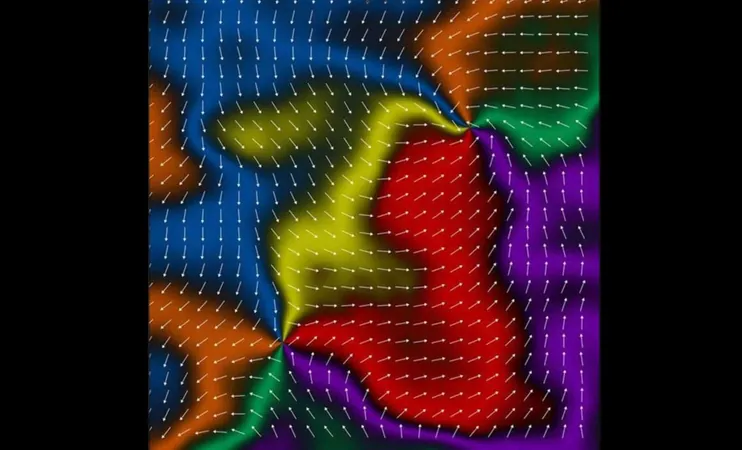
Scientists Discover Groundbreaking Third Form of Magnetism: A Game Changer for Superconductivity!
2025-01-23
Author: Ling
What is Altermagnetism?
Traditionally, scientists have acknowledged two primary types of magnetism: ferromagnetism, where atomic magnetic moments align in the same direction, and antiferromagnetism, where they alternate in opposing directions, resembling a chessboard pattern. Ferromagnetic materials are crucial for information storage due to their capability to signify data through 'up' and 'down' magnetic states. However, they are also vulnerable to data loss when exposed to external magnetic fields.
Antiferromagnets, on the other hand, do not exhibit any net magnetism, making them less prone to interference but more challenging to manipulate for data storage. Altermagnetism represents a combination of these two magnetism types, aligning neighboring magnetic moments while introducing a subtle twist that grants them extraordinary capabilities. This unique alignment results in time-reversal symmetry-breaking properties that facilitate novel electrical behaviors.
The Science Behind Time-Reversal Symmetry
At the core of altermagnetism is the concept of time-reversal symmetry breaking. Unlike conventional systems, where time moving forward or backward looks the same, altermagnetic systems break that symmetry, creating distinct electrical manifestations. This groundbreaking property holds significant implications for advanced applications in spintronics, where the electron's spin rather than its charge can be harnessed for data storage and processing.
Practical Applications: From Theory to Devices
To verify their findings, the Nottingham team employed state-of-the-art photoemission electron microscopy to probe the magnetic domains in manganese telluride—a material previously deemed antiferromagnetic. By utilizing circularly polarized light, they uncovered magnetic domains shaped by the unique time-reversal symmetry-breaking characteristics of altermagnets.
The researchers further extended their studies by fabricating altermagnetic devices and manipulating their internal structures through controlled thermal cycling. They successfully created exotic vortex textures in both hexagonal and triangular configurations, paving the way for future spintronic applications.
Altermagnets: The Future of Superconductivity and Spintronics
The implications of altermagnetism are monumental, particularly concerning superconductivity—a field hindered by the challenges of integrating magnetic materials that won't disrupt the delicate electron pairing essential for resistance-free energy transport. Altermagnetic materials could potentially bridge this gap, leading to the development of ultra-efficient energy systems and advancements in quantum computing.
Furthermore, their resilience and impressive speed make altermagnets exceptional candidates for spintronic devices. By marrying the stability of antiferromagnets with the practical strengths of ferromagnets, altermagnets promise to enhance data processing speeds and reduce susceptibility to external disturbances, revolutionizing memory and data storage technologies.
A Revolution in Technology Awaits
The discovery of altermagnetism heralds a new era for technologies reliant on magnetism and electron behavior. This groundbreaking work is not just about advancing individual technologies; it could revolutionize entire industries focusing on energy efficiency, data processing, and advanced computing solutions. Keep your eyes peeled—this could be the beginning of a technological renaissance!



 Brasil (PT)
Brasil (PT)
 Canada (EN)
Canada (EN)
 Chile (ES)
Chile (ES)
 Česko (CS)
Česko (CS)
 대한민국 (KO)
대한민국 (KO)
 España (ES)
España (ES)
 France (FR)
France (FR)
 Hong Kong (EN)
Hong Kong (EN)
 Italia (IT)
Italia (IT)
 日本 (JA)
日本 (JA)
 Magyarország (HU)
Magyarország (HU)
 Norge (NO)
Norge (NO)
 Polska (PL)
Polska (PL)
 Schweiz (DE)
Schweiz (DE)
 Singapore (EN)
Singapore (EN)
 Sverige (SV)
Sverige (SV)
 Suomi (FI)
Suomi (FI)
 Türkiye (TR)
Türkiye (TR)
 الإمارات العربية المتحدة (AR)
الإمارات العربية المتحدة (AR)